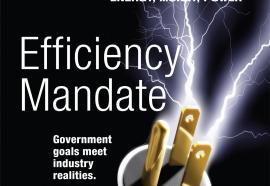An Indicator of Fairness
Ratable treatment of removal costs through depreciation should be favored.
Removal cost is the expenditure involved with physical removal or safe abandonment of an asset, and is not a trivial matter, because it is not unusual for such expenditures for long-lived property to exceed the related depreciable investment amounts. Various treatments of removal costs have various effects on utility ratepayers. Of all the approaches the industry uses, ratable treatment through depreciation minimizes the costs borne by ratepayers.









